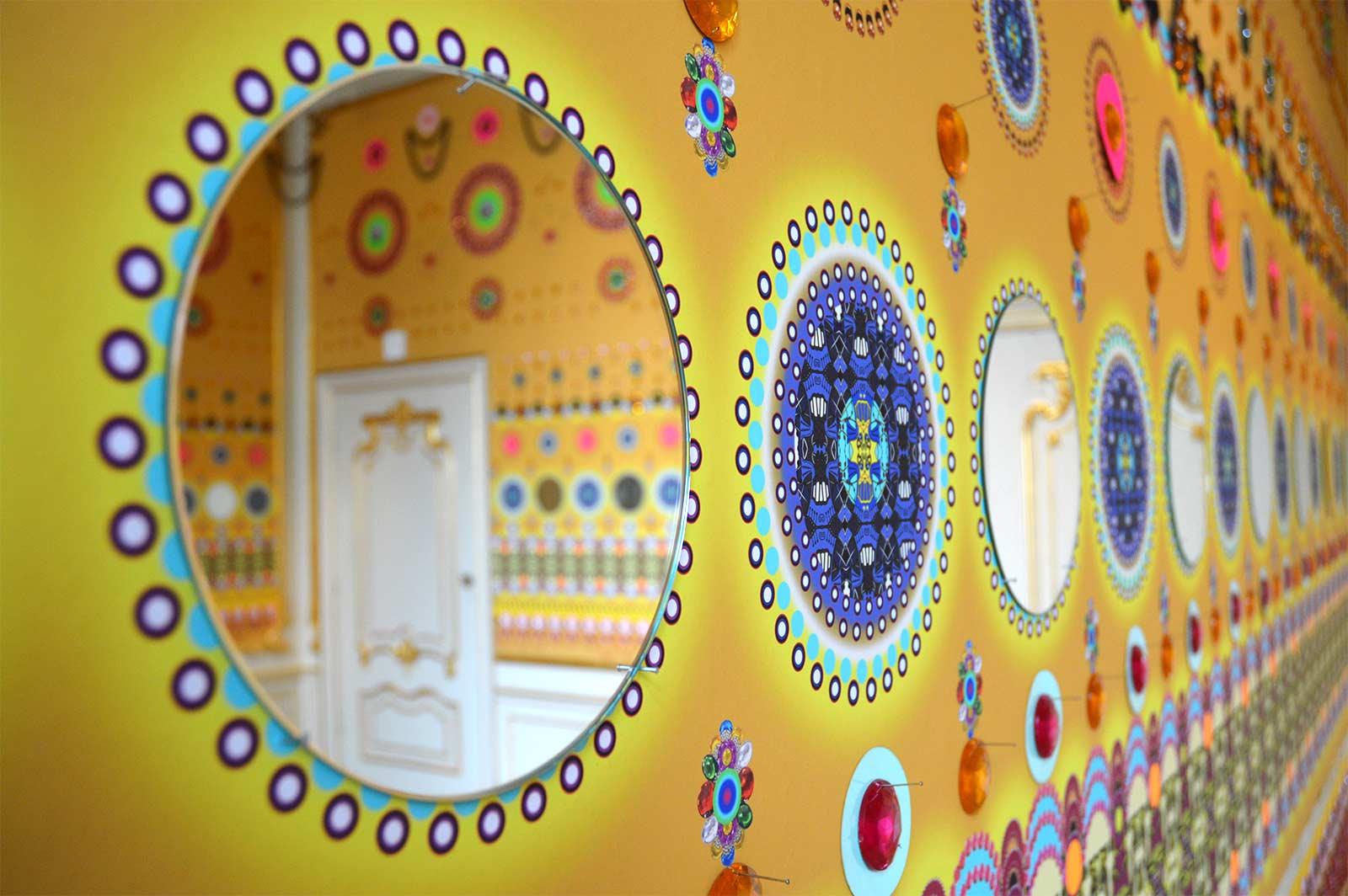
This year The Hague was caught up in the Analog Patterns festival, a pattern-themed initiative of the Grafische Werkplaats. Escher in The Palace joined in the festivities with the exhibition Once upon a time... with works by Christie van der Haak and Suzan Drummen in the Palace's ballroom and 'green room'.
Within Escher in The Palace, Escher's oeuvre is divided into two main themes: eternity and infinity. In the case of eternity, the most significant roles are played by nature, perspective and reflection. Infinity encompasses mathematical principles such as tessellations, polyhedra of stars and planets, and crystalline structures.

The work of Christie van der Haak and Suzan Drummen ties in seamlessly with these two main themes, and in particular with the scientific side of Escher’s oeuvre. Both artists are fascinated with patterns, reflections, polyhedra, and structures. Nevertheless, their fascination manifests itself in a totally different way than it does with Escher. Whereas Escher’s patterns border on the understated, the work of Van der Haak and Drummen is a rollicking rollercoaster of patterns, a vibrant paean to colour.


This encounter between extremes produces a convergence, rich in contrast, of different perspectives and phenomena surrounding the theme of patterns. And just as in love, two eventually become one: opposites attract.
In Once upon a time... a metamorphosis occurred, as it does in Escher’s most famous work. The work of Christie van der Haak gradually melded and metamorphosed into the work of Suzan Drummen. Hence both artists were responding not only to each other’s work but also to the work of Escher and the floors of the Palace, designed by Donald Judd. And the simple fact of holding this exhibition in Escher in The Palace gave rise to something else that’s new: a new perspective on Escher's work. A new perspective on patterns. Thereby breaking the mould.